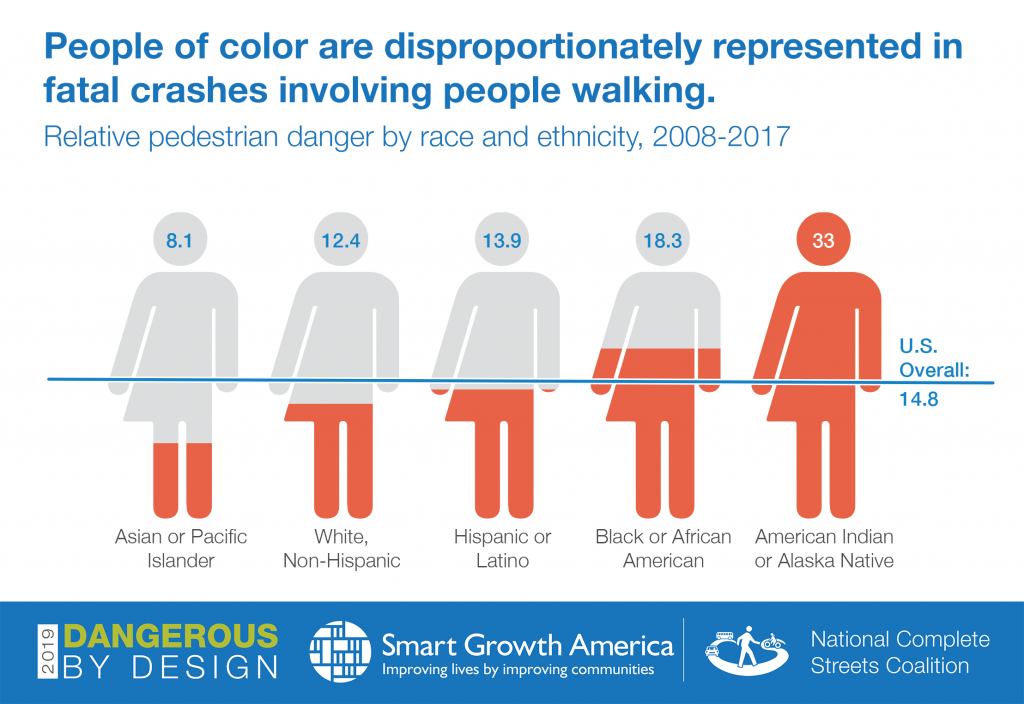Mike McGinn shares his thoughts on the state of walkability in 2021 —
and what he sees in one the horizon.
When I saw the Biden administration talking about sidewalks and exclusionary zoning – usually thought of as local issues – I thought “dang, walkability is getting closer to breaking through.” But the barriers remain large, the opposition (whether born of ignorance or design) remains stubborn, and safety is the worst it has ever been. In order to build on this year’s progress, we need to address this year’s issues.

Let’s review:
The pandemic drove new perspectives and concerns:
Across the country, pedestrians were granted new access to city streets, helping people discover the benefits of moving around outside of their cars. But transit took a big hit, isolating people, hurting essential workers, and hindering local economies. And without congestion-induced traffic calming, speeding increased and so did pedestrian fatalities.
Are we prepared to learn the lessons of the pandemic, or will we revert to a pre-pandemic status quo? A more equitable and resilient future would focus on more pedestrianization, more transit, and calming our streets.
A flood of new money is heading to states, cities and towns.
The good news is that grants and dedicated funding for safety, active transportation and transit increased dramatically with the passage of the infrastructure bill. The bad news is that so did money that states can use to widen roads and highways. The hope for new federal standards on safety and climate were dashed by Senate insistence on status quo rules, leaving state legislatures and DOT’s with the ability to turn local streets into quasi-highways, and big highways into massive ones.
That leaves us, our national partners and our local advocacy networks with a heavy lift. We must get the good projects in the path of that money. And we must mobilize to pressure states and cities to prioritize equity, safety and climate with their flexible funding. States could choose to prioritize building out sidewalks, investing in transit corridors, and maintaining what they have – it is not written in stone that they must endlessly expand highways. But they will only do so if the public demands better investments.

A new spotlight on equity in walkability.
The broader public became more aware of how our public spaces are hostile to Black people due to biased policing and vigilantism. The role of police enforcement in transportation came under scrutiny, and America Walks backed up local advocates working to decriminalize jaywalking – as Black pedestrians are stopped way out of proportion to their percentage of the population.
The bias extends to infrastructure as well. BIPOC communities, folks with disabilities, and less wealthy communities are likely to have overbuilt roads with crosswalks few and far between. That contributes to higher rates of pedestrian fatalities in these neighborhoods. Zoning rules exclude people from safe walkable places, pushing them into communities distant from jobs and services. We’ll be supporting local advocates fighting for mobility justice in transportation and land use. And we’ll push USDOT to meet its stated equity goals.
Climate change keeps getting more real.
We won’t catalog the extreme weather events – you all see it. And governments are getting more serious about it, though not fast enough. Unfortunately, the policy debate often leaves out the most basic no-carbon form of transportation – walkability. We will never get to what the science calls for – deep reductions fast – without making walkability a priority.
My New Year’s hope is that climate organizations mobilize to replace highway spending with active transportation like they mobilized to replace coal plants and pipelines with renewable energy. There is a common base of support among active transportation, transit and climate organizations. I believe the grassroots are ready to go, and we’re going to keep making the connection between walkability and climate justice.
Safer vehicles.
With all the coverage around its size and whether it could pass, you might have missed that the infrastructure bill contained some serious new directions to USDOT on vehicle design. Specifically, cars will be rated on safety for pedestrians, new rules are coming for automakers to design front ends and bumpers for pedestrian safety, automatic emergency braking will become standard, and cars will be required to come equipped with drunk driving detection. These laws require agency rules for implementation, so stay tuned on how you can help ensure that the final rules adopted meet the intent of these new laws.

Have we mentioned the Manual on Uniform Traffic Control Devices?
Well, 25,000 of you did! We’re proud to be part of the coalition that generated that many comments to the rulemaking process on “the most important pedestrian safety document you never heard of.” With that level of attention, we know USDOT was not just hearing from traffic safety policy wonks. It was members of the public saying they are tired of streets that prioritize fast moving vehicles over people outside of cars.
Put it all together, and it feels like a very consequential moment for walkability.
Can we stop and reverse decades of auto-centric planning? Can we center the dignity and needs of everyday people trying to be part of communities in which everyone belongs? To the extent there is hope in this moment, it is because more people are getting why walkability matters to health, safety, climate, equity and community vitality. You can see our issues making their way into the big media outlets, and the personal media of Tiktok, Instagram and more. It’s a movement.
We’re looking ahead to next year, to supporting all of those holding a vision of a more equitable and inclusive vision of the future, and working to make it happen.